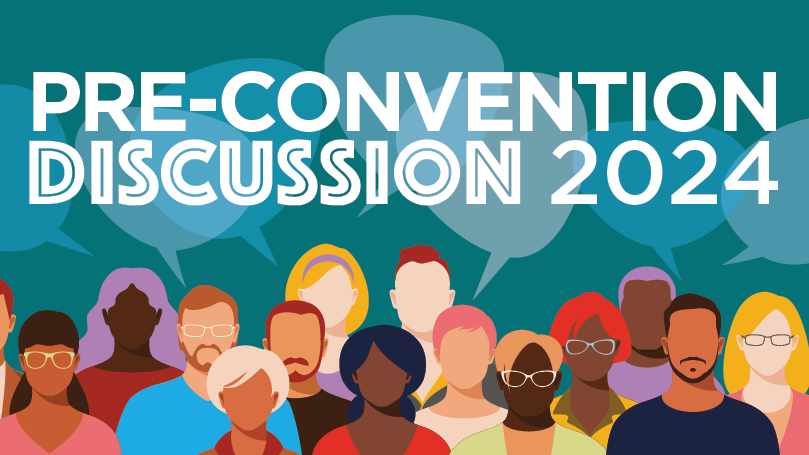
This piece is a contribution to the Pre-Convention Discussion for our 32nd National Convention. During Pre-Convention Discussion, all aspects of the party’s program, strategy, and tactics are up for consideration and debate. The ideas presented here are those of the author or authors alone, and do not necessarily reflect the positions of the Communist Party USA, its membership, or their elected leadership bodies. — Editors
As noted in Communist media: the terrain is challenging, but we must build there anyway the media landscape has changed. We can no longer rely solely on traditional methods i.e. newspapers and mass media publications; however, there are a myriad of issues that need to be solved in order to move forward together as a strong, unified party. Our party must build unity, consistency, and reliability into our media work. This includes updating the Party’s quality standards, standardizing important processes, and revamping our existing media assets (websites, social media profiles, etc.)
Consistency
Social media accounts of different clubs lack consistency in messaging and design. Each club’s account is responsible for creating its own content, leading to varied styles even when following the Party’s style guide. This inconsistency weakens the perception of a unified Party. Efforts to unify messaging exist, but the diverse designs from different comrades result in inconsistency.
Quality
Variations in experience and proficiency levels lead to inconsistent content quality in videos, graphics, and messaging. High-quality content is crucial for appealing to a broad audience. Poor designs, low-quality podcasts, and poorly written posts can deter potential engagement. Training is needed to ensure high-quality content while helping comrades improve their skills.
Reliability
Posting frequency across club accounts varies, with some posting daily and others rarely. Inconsistent communication can lead to loss of interest. The Party must streamline its messaging pipeline to provide timely analysis and positions on trending topics.
Updating Quality Standards
Style guide
The current style guide needs updates, including reflecting recent logo changes and covering all content types like video, audio, and physical media. It should provide guidance on maintaining consistent quality and messaging across all platforms.
Resource library
A dedicated resource library should be created, containing:
- Color palette
- Downloadable fonts
- Logo SVGs and PNGs
- Textures, overlays, and backgrounds
- Approved imagery
- Social media templates
- Iconography/design elements
- Sample messaging
- Communication guidelines
- Content calendar
Centralize communications
The best way to ensure consistency, high quality content, and reliability, is by centralizing communication efforts. This doesn’t mean taking away content production duties from comrades — but, adding a layer of oversight to the process. A central media committee can set quality standards, onboard comrades, ensure consistency, and disseminate messaging. Clubs and members can submit social graphics, video content, posters, etc. that are edited by the central committee as needed.
When comrades first join the Party and show an interest in media, art, and communications, they should be put through an onboarding process by the central media committee to make sure they are acquainted with everything they need to start producing high quality content.
Standardizing processes
Websites
A standardized website template should be provided to local clubs, ensuring consistency in design and content. All club websites should be connected to the national website for easier navigation and activity tracking.
Email templates should be included in the resource library for various purposes, ensuring consistent communication. Templates for reaching out to new comrades, informing about actions, and requesting donations should be standardized.
Other communications
Templates for Word documents, slideshows, and forms should include headers, footers, font styles, logos, and photography to maintain consistency.
Revamping Media Assets
Social media profiles
All profiles should match the Party’s style guide. Templates should be used for content that doesn’t fit platform dimensions to avoid a sloppy appearance.
Video content
A diversified video strategy is needed, including:
- video essays
- educational videos
- reaction/commentary videos
- interviews
- news roundups
- “man-in-the-street” videos
- crossposts from other platforms.
Podcast
High-quality, well-produced podcasts should be offered consistently, using platforms like Riverside.fm to ensure top audio and video quality.
Physical media
Physical media should reflect style guide updates and fashion trends. Templates for posters, fliers, and stickers should be editable. Additional physical media like zines, updated merch, bookmarks, pins, stickers, and patches should be available.
Interactive engagement and algorithms
Interactive engagement
Engagement is not just about posting content but also about audience interaction. This includes responding to comments, participating in discussions, and using interactive features like polls, Q&A sessions, and live streams. Engaging directly with followers builds stronger online connections.
Regularly soliciting community feedback can improve content relevance and effectiveness. This can be done through surveys, feedback forms, and direct engagement on social media. Understanding the audience’s needs and interests helps tailor content that resonates more deeply.
Understanding algorithms
Engaging effectively with social media requires knowledge of algorithms and terms of service agreements. Both algorithms and content moderation by platform administrators shape content visibility. However, due to the pervasive logic of capital, incomplete and misleading data, algorithms often contain their own biases and reinforce existing discrimination. Understanding these dynamics helps in tailoring content to drive engagement without compromising the Party’s message. Optimizing captions, thumbnails, and tags can increase visibility organically (without paid promotion).
Conclusion
Improving production quality, editing standards, and creative calls to action is necessary to drive engagement. Content producers must avoid blunting messaging or delaying responses for engagement’s sake. The Party must intentionally add its perspective to the media landscape, ensuring political and class consciousness through consistent and high-quality content. Building on successful local strategies and politically engaging mass audiences online are essential for raising standards party-wide. Clicks and likes are insufficient alone; content must include calls to action and political analysis to be relevant and impactful.


 Join Now
Join Now